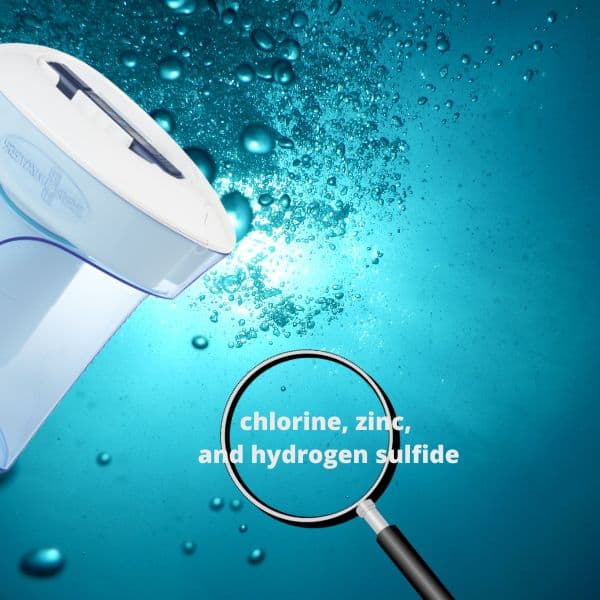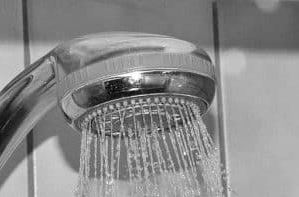What Contaminants Does a Water Filter Pitcher Remove?
A water filter pitcher can effectively ensure your water is free from contaminants. The filter in the pitcher works to remove impurities like dirt, rust, sand, and other solid particles that can make your tap water taste bad. But what else does a water filter pitcher do?
Water filter pitchers are designed to reduce or eliminate contaminants from your drinking water. This includes chlorine and pesticides. Some models also remove sediment and heavy metals such as mercury and cadmium, while others may reduce levels of nitrates and other organic compounds.
Many brands also protect against bacteria and viruses by using activated carbon or other filtration systems. By filtering out these toxins, you can ensure your family gets safe drinking water without worrying about the health risks of consuming contaminated tap water. You can check out this list for the best water filter pitchers.
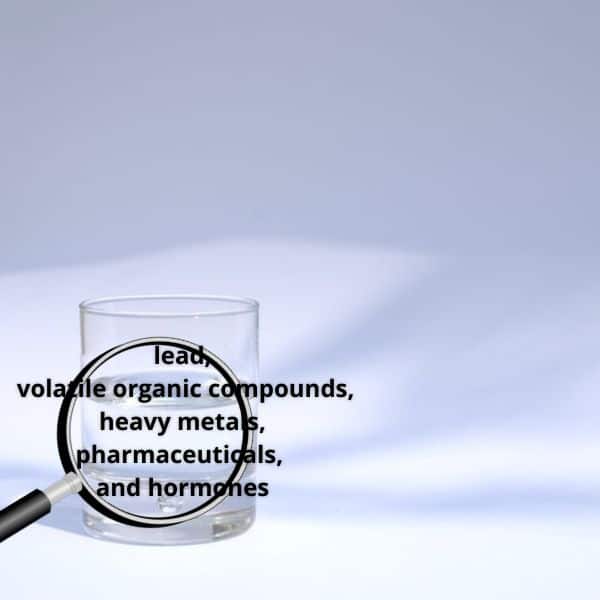
Sediments
Water filter pitchers are an essential part of any home water filtration system. These pitchers use specialized filters to capture and remove sediment particles, bacteria, and other unwanted substances from the water. The result is a clean, filtered substance that tastes great and is much healthier than untreated tap or well water.
Removing sediments from drinking water is vital to protecting your and your family’s health. In addition to blocking out contaminants such as lead and chlorine, a good quality filtered water pitcher can reduce sediment levels by up to 99%. This process can help reduce the amount of dirt and debris in the water by trapping these impurities inside a mesh-like filter cartridge.
Chlorine
A water filter pitcher is an easy and cost-effective way to remove chlorine from tap water. Chlorine can harm your health, causing skin irritations, respiratory problems, and other illnesses. Using a water filter pitcher is essential to ensure you get the best water quality for yourself and your family.
These pitchers are designed to remove chlorine from the tap water before it enters the drinking chamber. The filtering process occurs when water passes through a carbon block or granular activated carbon filter. This removes chlorine and other contaminants such as lead, mercury, and iron particles from the water. In addition, some pitchers may come with additional features such as remineralization filters which add minerals to the filtered drinking water for improved taste and nutrition.
Chromium 6
Water filter pitchers remove a wide variety of contaminants from drinking water. One such contaminant is chromium 6, a hazardous substance in many public drinking water sources. Chromium 6 is an odorless, colorless, and tasteless carcinogen that has been found in many public drinking water sources around the world. Long-term exposure to this chemical can lead to serious health problems, including cancer, reproductive issues, and birth defects.
Therefore, it’s essential for people who use these contaminated sources to take action. Water filter pitchers reduce or eliminate chromium six from drinking water without spending too much money or time on other filtration methods.

Volatile Organic Compounds (VOCs)
Water filter pitchers such as PUR and Brita water filter pitchers, are designed to remove volatile organic compounds (VOCs), which can be found in water sources due to agricultural, industrial, and urban runoff. VOCs can include a range of hazardous chemicals such as benzene, trichloroethylene, and xylene.
These pollutants can cause serious health risks when consumed over long periods. Water filter pitchers use activated carbon filters to absorb VOC particles from the water supply, thus reducing the risk of consuming these contaminants. The activated carbon also traps other particulates, giving the water an unpleasant odor or taste. By filtering out VOCs and other impurities, a good quality water filter pitcher can provide you with fresh-tasting drinking water free from any harmful toxins.
Heavy Metals
Water filter pitchers (Clearly Filtered Pitcher, ZeroWater Filter Pitcher) are also a great way to reduce the amount of heavy metals in your drinking water. Heavy metals, such as lead, mercury, and arsenic, can affect your health if consumed over long periods. Water filter pitchers are designed to remove these contaminants from tap water while leaving behind beneficial minerals like calcium.
These pitchers offer various filtering options depending on the user’s needs. Some feature a single-stage carbon filter which reduces chlorine taste and odor and certain pollutants found in tap water. For those looking for something more comprehensive, some multi-stage pitchers use a combination of activated carbon and ion exchange resins to remove heavy metals from their drinking water. These systems also provide additional protection from microorganisms like bacteria and viruses by utilizing an ultrafiltration membrane.
Pesticides and Herbicides
Pesticides and Herbicides can be found in many water sources, making it important to filter out these toxins. Water filter pitchers are a great way to purify and ensure you drink clean water. They remove contaminants such as heavy metals, pesticides, and herbicides that can enter our water supply from agricultural runoff or other sources.
These pitchers work by passing the unfiltered water through several filters to remove any impurities. The filter usually consists of activated carbon, which helps trap particles, chemicals, and other harmful substances from the clean water supply. Additionally, some pitchers come with an additional stage of filtration, which includes a special resin that helps to reduce bad smells associated with certain types of contaminants like chloramines.

Disinfection Byproducts
Water filter pitcher systems allow households to conveniently purify drinking water, while at the same time removing potentially harmful materials. Most importantly, water filter pitchers effectively eliminate disinfection byproducts (DBPs). DBPs are formed when chlorine is used to clean and disinfect water during treatment.
Though chlorine is a necessary part of the treatment process, it can form DBPs when it reacts with organic material found in water. These byproducts are known for their potential health implications, including increased cancer risk, reproductive toxicity, and other health risks.
Fortunately, using a quality water filter pitcher system can eliminate up to 99% of these contaminants from tap water before consumption. This helps reduce potential health risks associated with drinking DBP-infiltrated tap water and ensures that consumers enjoy daily safe and delicious drinking water.
Perfluorochemicals
Water filter pitchers are also an efficient way to reduce the amount of perfluorochemicals in drinking water. Perfluorochemicals (PFCs) are a group of man-made chemicals that have been used in many consumer products and industrial processes since the 1950s. Health studies have linked PFCs to adverse effects on human health, such as developmental disabilities and changes to liver function.
Fortunately, using a water filter pitcher effectively removes these dangerous chemicals from your drinking water. Most pitchers use activated carbon filters to trap contaminants down to 0.5 microns in size, allowing them to capture impurities like chlorine, lead, and PFCs. Some models also include additional stages for further filtration that can reduce VOC levels or enhance the taste and odor qualities of the water.
Pharmaceutical Residues
One potential health benefit of using a water filter pitcher is the removal of pharmaceutical residues in your drinking supply. Pharmaceutical residues can be present in our drinking water due to improper disposal methods or leakage from wastewater treatment plants. These substances have been linked to adverse health effects such as hormone disruption, neurological impairment, reproductive issues, antibiotic resistance in bacteria species, and other risks.
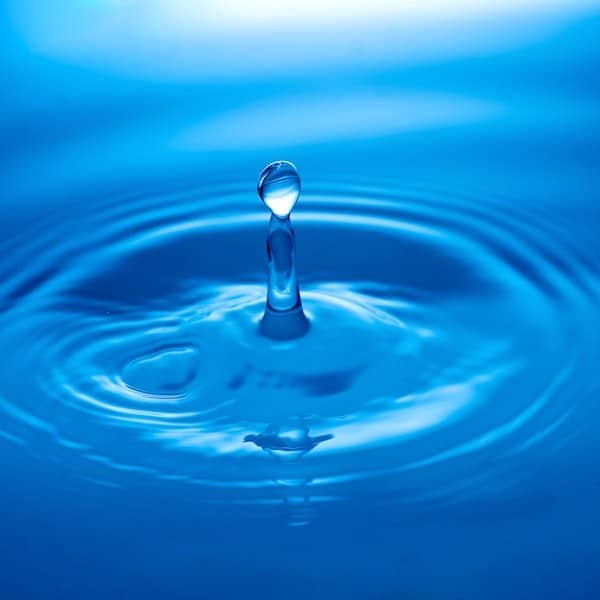
What Contaminants That Some Water Filter Pitchers Cannot Remove?
While many people use water filter pitchers to help improve the safety and taste of their drinking water, they may still not be removing all possible contaminants. Understanding these contaminants and what filters can remove them is key to ensuring your family’s safety when drinking tap water.
Asbestos
Asbestos is a naturally occurring mineral that can be found in soil and rock formations throughout the world. It can enter municipal water systems through pipes or other infrastructure that contain asbestos materials. Asbestos exposure has been linked to many health issues, including lung cancer and mesothelioma.
Unfortunately, water filter pitchers are not designed to remove asbestos particles from tap water due to their larger size range compared with other contaminants that they can remove effectively.
Chloramine
It is important to know that most water filter pitchers cannot remove chloramine from tap water. Chloramine is a combination of chlorine and ammonia used as a disinfectant in many municipal water systems.
Chloramines cannot be removed by activated carbon filters, which are commonly found in water filter pitchers. Therefore, if tap water contains chloramine, you must look for an alternative filtration system that can effectively remove it, such as reverse osmosis or distillation systems. While these may be more costly than a simple pitcher, they are an investment in your health and safety since they can protect you from harmful pollutants like lead or heavy metals.
Fluoride
Fluoride is a naturally occurring mineral found in many sources of freshwater around the world and can be beneficial for dental health when consumed in small doses.
Unfortunately, some communities have intentionally added fluoride to their water supply to bolster dental health further. As a result, it has become essential for consumers to understand which filtration systems can remove fluoride from their drinking water.
Unfortunately, most basic pitcher-style filters cannot remove this chemical from the water you drink at home – leaving your family exposed to potentially dangerous levels of fluoride if your municipal water source contains higher amounts of this compound than recommended by health organizations.
Microplastics
Water filter pitchers are popular for many households seeking safe drinking water. However, these pitchers may be unable to remove microplastics from the water. Microplastics are tiny pieces of plastic debris that can find their way into drinking water supplies and have profound health implications when consumed.
Microplastic contamination has been studied in surface waters and oceans but is now increasingly found in tap water. It is essential to understand that regular filters do not effectively remove these particles and that a specialized filter may be needed to protect against microplastic contaminants.
Microscopic Organisms
Water filter pitchers cannot protect against microscopic organisms like bacteria and viruses. The filtering mechanisms used in most water filter pitchers are designed to remove particles larger than one micron.
While this may effectively eliminate much of the sediment and chemicals in tap water, it does not provide enough filtration to catch smaller organisms, such as those found in the surface or groundwater. This means that while they can reduce the level of pollutants in drinking water with some degree of accuracy, they will not entirely purify it from microscopic organisms or pathogens.
Water Hardness
Water hardness is caused by high concentrations of calcium or magnesium ions in the water, which give it a “hard” feeling when you drink it. This type of contamination is often found in well water or other natural sources. Water filter pitchers are not designed to remove this type of contamination, so they will remain in your drinking water even after filtration.
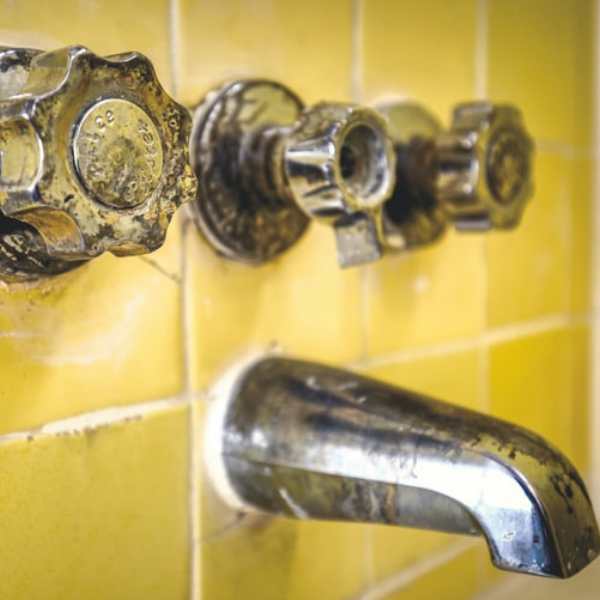
Common Types of Water Filter Pitchers
Water filter pitchers use filtration to remove contaminants like dirt, bacteria, lead, chlorine, and pesticides. There are a variety of different types of water filter pitchers available on the market. Here is an overview of some common types.
Carbon Filters
The most common type of filter used in these pitchers is the carbon filter. Carbon filters remove contaminants such as chlorine, lead, pesticides, and other organic compounds from tap water. They also absorb volatile organic compounds (VOCs), chemicals like benzene and formaldehyde found in tap water.
Carbon filters come in different sizes and types depending on the type of filtration needed such as:
Solid Block Carbon
Solid block carbon filters are made from a compressed block or “cake” of activated carbon particles, which have been blended to form a solid unit. These filters remove odors and particulate contaminants such as dust, smoke, gases, volatile organic compounds (VOCs), and other airborne pollutants. In addition, they can reduce the presence of common allergens like pollen and pet dander for people with allergies or asthma.
Granulated Activated Carbon
Granulated activated carbon filters contain bits of powdered activated carbon that have been treated to increase their surface area for better adsorption properties.
Ceramic Filters
The ceramic filter is one of the most popular types due to its high efficiency in removing particles such as bacteria, protozoa, and other harmful pollutants from tap water.
Ceramic filters contain tiny holes that allow only particles smaller than 0.2 microns in size to pass through the filter. In contrast, larger contaminants, such as rust particles or dirt, are trapped within it. The tiny pores also stop some chemical elements like chlorine from passing through it into your drinking water. Additionally, ceramic filter pitchers have been proven more effective at filtering out the lead that can be present in municipal water supplies.
Ion Exchange
Ion exchange filter passes water through an ion exchange resin bed, which traps impurities and pollutants in the water. The process involves exchanging calcium and magnesium ions for sodium ions, resulting in purer tasting and smelling water with fewer minerals.
The benefits of using an ion exchange filter pitcher include improved taste and smell as well as the removal of lead, chlorine, pesticides, and other contaminants that can be present in tap water. Ion exchange filters also help reduce limescale buildup on plumbing fixtures such as faucets, sinks, or showerheads.
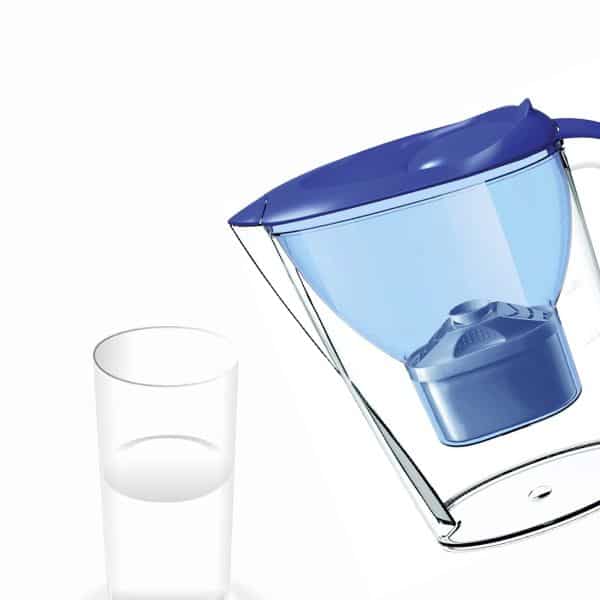
How to Know What Contaminants a Water Filter Pitcher Remove
Many homeowners turn to water filter pitchers to ensure their families have safe, contaminant-free drinking water. Knowing what contaminants a water filter pitcher can remove is essential for safe drinking water.
Find the Performance Data Sheet
You must reference its performance data sheet to determine which contaminants the filter pitcher removes. This sheet will contain detailed information about how well a filter eliminates contaminants.
The performance data sheet should include essential details such as the type of materials used in the filter, the size and shape of the filters’ pores, and what kind of specific contaminants it can remove. It should also specify any limitations on effectiveness or safety associated with using the particular filter under certain conditions.
Additionally, it will provide information on how long each filter can last before needing to be replaced. Access to this information will help you decide when purchasing a water filtration system for your home or office.
Find the NSF Certifications
When looking at the filtration system of a particular pitcher filter, it’s important to look for certifications from NSF International, which tests and verifies products for their ability to reduce various contaminants from drinking water.
The National Sanitation Foundation (NSF) runs independent tests on water filters of all kinds. It certifies them based on their performance in removing common contaminants such as chlorine, lead, cysts, etc. When searching for a pitcher with good filtration capability, you should look for products with an NSF certification. This will ensure that your pitcher meets stringent standards set by the foundation and will do its job of providing safe drinking water.
NSF certifications have been divided into different categories:
NSF/ANSI Standard 42
NSF ANSI Standard 42 is a set of standards for reducing contaminants in drinking water, such as chlorine and chloramines. This standard has been developed by the National Sanitation Foundation (NSF) and American National Standards Institute (ANSI). It is designed to protect public health by ensuring that drinking water systems are free from potentially hazardous contaminants.
NSF/ANSI Standard 53
The NSF/ANSI Standard 53 certification program covers reverse osmosis systems, distillation systems, carbon filters, and other point-of-use or point-of-entry devices to reduce contaminants in public or private drinking water supplies. Certification under this standard ensures that these devices can effectively reduce specific contaminants, such as lead and cysts, from drinking water.
NSF/ANSI Standard 244
The NSF/ANSI Standard 244 outlines specific specifications for products such as corrosion inhibitors, scale inhibitors, biocides, disinfectants, and coagulants. Additionally, it sets out criteria concerning product performance testing, labeling requirements, and product environmental impact considerations.
NSF/ANSI Standard 401
NSF ANSI Standard 401 is a rigorous certification process that evaluates the safety and performance of drinking water treatment products, such as reverse osmosis systems, distillation systems, and filter devices. This standard tests for reducing contaminants in drinking water, including lead, chlorine, volatile organic chemicals (VOCs), and other harmful pollutants. It also sets guidelines for the design and operation of these products.
NSF/ANSI Protocol 473
NSF ANSI Protocol 473 is an independent certification for testing the safety of consumer products. The certification tests products for potential safety hazards verifies that manufacturers are making claims about their products accurately, and determines if any product components may harm consumers.
The NSF ANSI Protocol 473 examines several aspects of a product’s safety, including physical strength, fire retardancy, electrical shock resistance, flammability testing, environmental performance, and chemical analysis. During the testing process, any potential risks identified will be evaluated to ensure that they do not pose any health risk or injury to consumers.
So, to earn an NSF certification mark on their product packaging or labeling materials, manufacturers must submit their products to NSF International for testing. This testing is done following stringent protocols established by the American National Standards Institute (ANSI).
Get in touch with the manufacturer
You should contact the manufacturer to get accurate information about what contaminants the particular model can filter out. Contacting them directly will provide more detailed and reliable information than on their website or other product description sites.
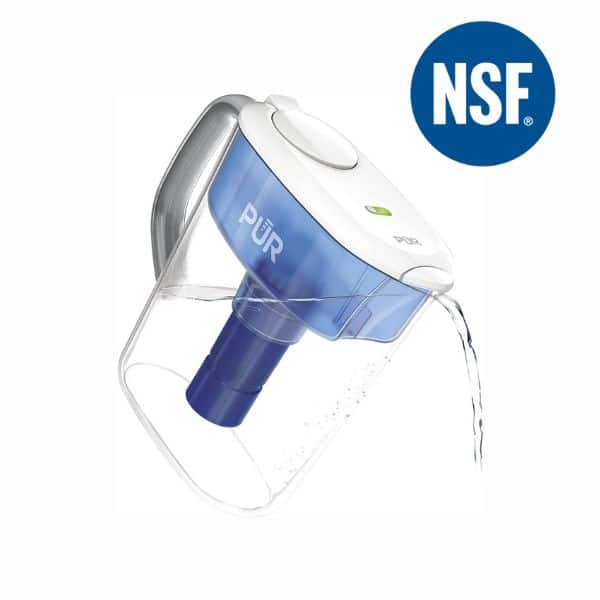
Conclusion
Water filter pitchers are an effective and convenient way to reduce the number of contaminants in your drinking water. They can remove sediment, chlorine, and other chemical pollutants. So, if you claim to have the best water filter pitchers, they should have the qualities to remove all types of harmful substances in the drinking water.
Depending on the type of pitcher you have, they may also reduce lead, mercury, and some pesticides. You should find its Performance Data Sheet or the NSF certificate on your product to know what contaminants a water filter pitcher can remove. This information will guide you in choosing your home’s best water filter pitcher.
